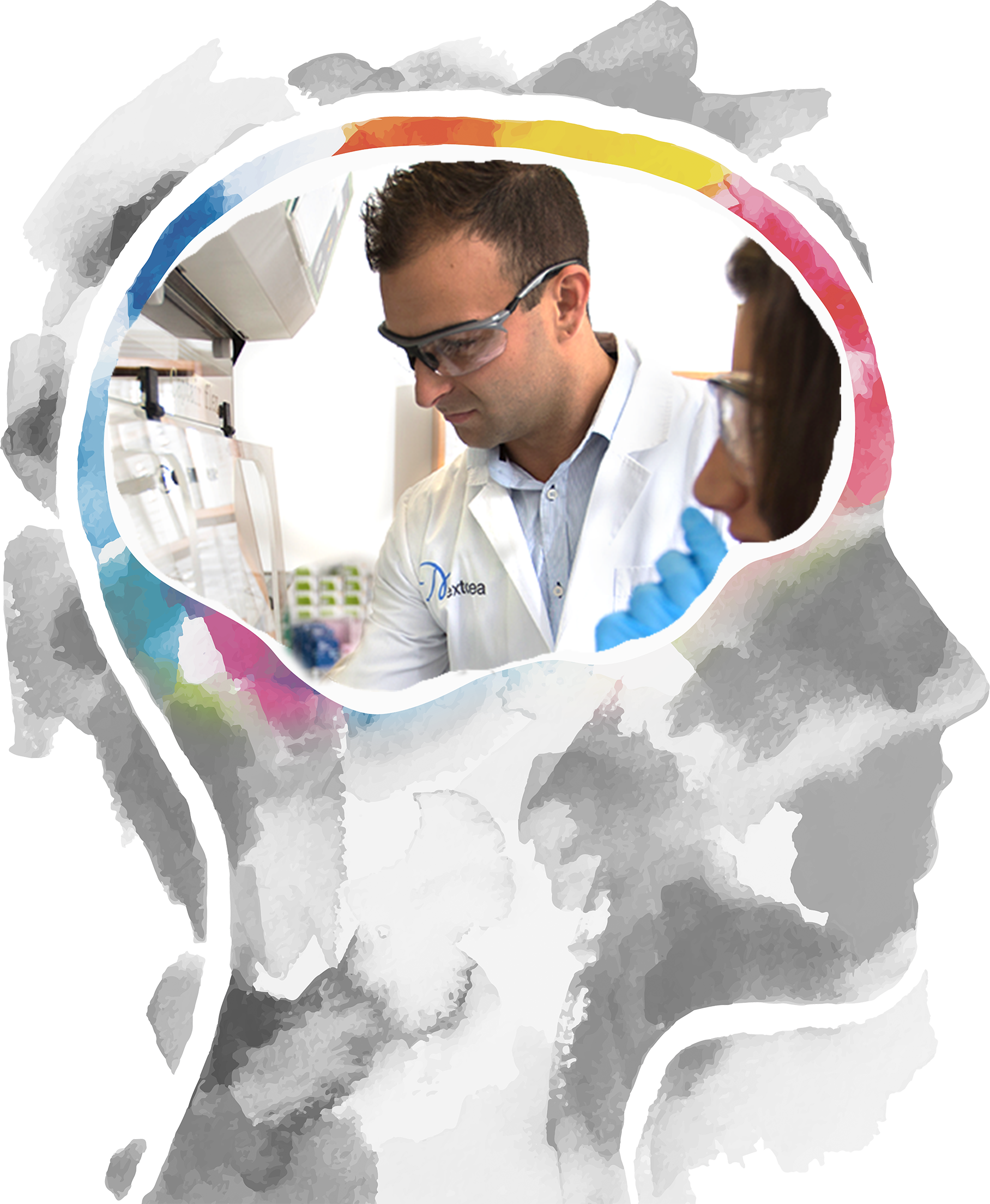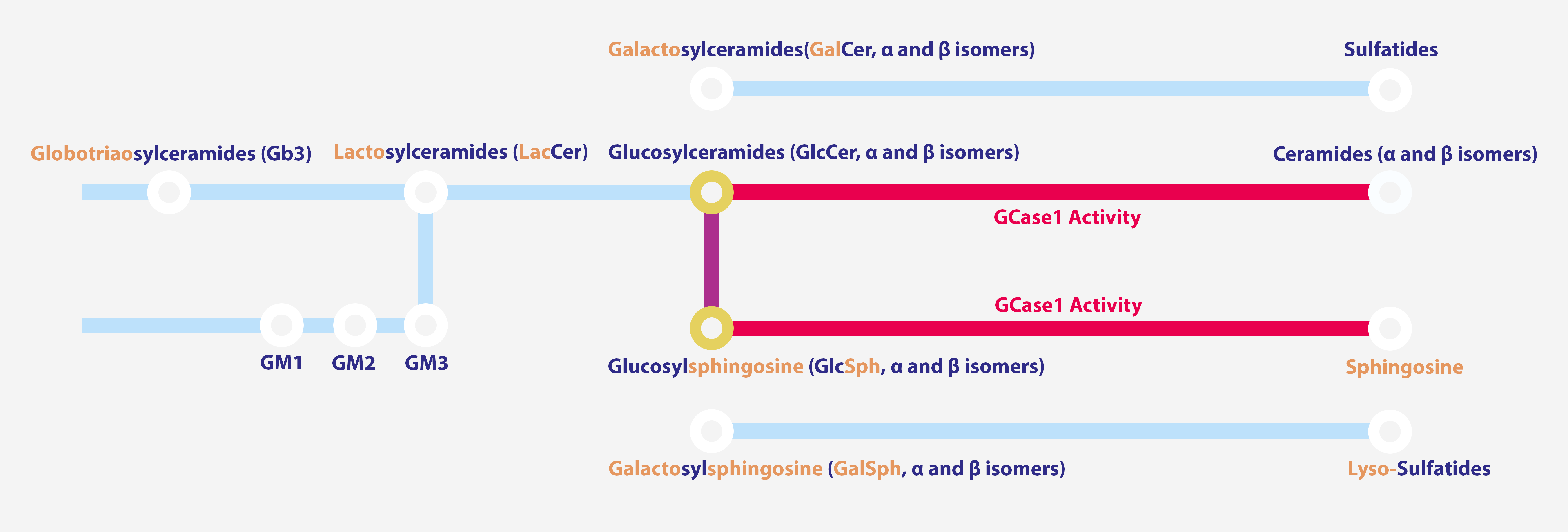Performing measurements of
Role of GBA1 / GCase in Parkinson’s and Gaucher Diseases
As one of the most common risk factors, the mutation of Glucosylceramidase beta 1 (GBA1) plays an integral role when discussing Parkinson’s Disease (PD) and Gaucher Disease (GD). GBA1 is a gene responsible for encoding GCase (also called β-Glucocerebrosidase, or acid β-glucosidase, D-glucosyl-N-acylsphingosine glucohydrolase), an enzyme active in lysosomes that helps its “recycling center” break down lipids and glycolipids. However, if GCase activity diminishes due to mutations in the GBA1 allele(s), it can ultimately lead to an accumulation of glucosylceramide (GlcCer) and glucosylsphingosine (GlcSph), a cataclysmic combination that accelerates brain neuron cell degeneration. More specifically, homozygous and heterozygous mutations in the GBA gene increase the risk of Gaucher and Parkinson’s, respectively.

Additionally, Nexcea offers the ability to measure concentration across human and animal biological matrices–such as CSF, plasma, urine, and tissues–for any of the following GCase pathway:

References
- Merchant et al (2023) LRRK2 and GBA1 variant carriers have higher urinary bis(monacylglycerol) phosphate concentrations in PPMI cohorts 9:30; https://doi.org/10.1038/s41531-023-00468-2
- Surface M et al (2021) Plasma Glucosylsphingosine in GBA1 Mutation Carriers with and without Parkinson’s disease. Movement Disorders, 37(2):416-421
